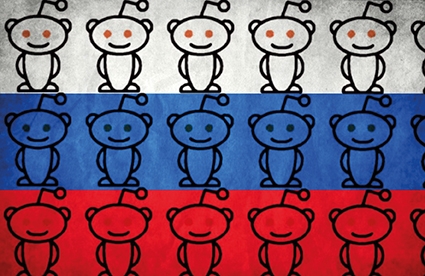Study on Resilience to Russian Disinformation in Eastern Europe
Since the advent of the digital era, the concept of resilience to disinformation has been a key notion, researched and discussed. Work on resilience plays a role in the collective defense against any attempt to affect societal and political processes. Tackling this concept is all the more important considering that since the collapse of the USSR, Russia has continued to interfere with the domestic politics of its former soviet republics and further afield, as seen in the US presidential elections.
In the wake of these works, a study entitled 'Disinformation Resilience in Central and Eastern Europe' by the DRI - Disinformation Resilience Index was released last week. The study is aimed at assessing national vulnerabilities and preparedness to counteract foreign-led disinformation in 14 countries of Eastern and Central Europe. The Visegrad states (Czech Republic, Hungary, Poland, Slovakia), Eastern Partnership countries (Azerbaijan, Armenia, Belarus, Georgia, Moldova, Ukraine), the Baltic countries (Estonia, Latvia, Lithuania) and Romania are covered. An integral part of the research is the Disinformation Resilience Index, which is a quantitative assessment of exposure to Kremlin-led disinformation and the level of national resilience to disinformation campaigns. Authors of the content are government representatives, analytical, consulting and research institutions, media, NGOs, and pressure groups.
According to NATO, “disinformation resilience is the adaptability of states, societies, and individuals to political, economic, and societal intentional pressure and falsehood spread in various formats of media, including TV, radio, print and online media, (and) social media, to influence political and economic decisions, including thought-targeting particular vulnerable groups”. Four categories of disinformation can be highlighted: falsified claims, unsourced claims, claims based on previous unsourced claims to legitimize, and conspiracy theories.
If we now take a global look at the 14 countries targeted by the report, here are the conclusions.
The elderly are among the most vulnerable groups to Russian disinformation. In 2016, for instance, in Lithuania, 45.8% of the population aged 46 or older agreed that “in the Soviet Union, life was better than it is today.” Moscow takes advantage of this by targeting them "to instigate a sense of nihilism about European integration,” a fact seen as much in Georgia as in other eastern countries.
Ethnic minorities are also receptive. In Georgia, ethnic minorities (Armenians, 4.5%; Azerbaijanis, 6.3%) are most targeted. Many do not know the Georgian language well or at all, which is a serious barrier to their integration into Georgian (and European) society. As a result, they often use foreign sources of information, including Kremlin-governed media. In Moldova, nearly 20% of people do not speak Moldovan/ Romanian. In Latvia, 25% of the population is Russian. In Estonia, natives whose mother-tongue is Russian make up more than 28% of the whole population. So the Russian language factor should be taken into account. Russian is the main foreign language in Georgia, with 72% of citizens speaking it fluently as opposed to the 20% who speak English. This means that while youth are more likely to learn English at school these days, in general in Georgia, people remain more vulnerable to Russian disinformation.
The second group susceptible to Kremlin-led disinformation are active followers of the Orthodox Christian Church, in particular in Georgia, Belarus, Moldova and Ukraine. In Moldova, for example, the Orthodox church is the most trusted institution, with 70%.
Some particularities exist among these countries. In Belarus, army officers and staff are considered by the DRI as more vulnerable, while in Georgia, people related to business are more likely to be targeted because Russia is one of the biggest economic partners of Georgia.
At the end of the day, the popularity of Russian-language media heavily determines the exposure to Russian disinformation, all the more because these countries seriously lack national long-term counter strategies.
Nevertheless, while Russian disinformation is important, focusing only on this might lack sense. In eastern countries, they are other (minor) propaganda sources, among others the USA, but also local propaganda often used as a response to Russian attacks. This local response usually plays more on vocabulary than on use of fake news. Furthermore, according to NATO, the definition of the problem, i.e influencing economics and politics, only focuses on disinformation, and totally forgets that a (conscious or not) lack of information will also ultimately affect the public opinion.
See the full study here: www.prismua.org/wp-content/uploads/2018/06/DRI_CEE_2018.pdf.
By Antoine Dewaest












